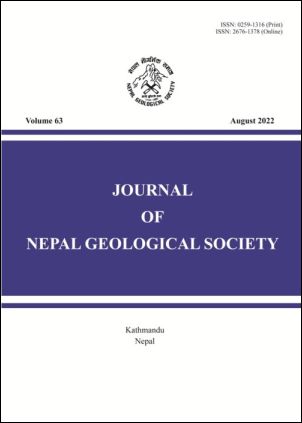Landslide susceptibility assessment in the Rangun Khola watershed of far western Nepal
DOI:
https://doi.org/10.3126/jngs.v63i01.50827Keywords:
Frequency ratio, logistic regression, landslide susceptibility, Nepal HimalayaAbstract
Considering the serious threat of landslides to life, property, and the environment, this study aimed at exploring past landslides (2005-2020) to evaluate landslide susceptibility. The study is carried out in the Rangun Khola watershed, in western Nepal covering an area of 488 km2. The landslide inventory map was prepared, recognizing 494 landslides, among them 70% were used for susceptibility mapping, and the rest 30% for validation purposes. The size of the landslide was found in the range of 103.53 m2 to 149120.1 m2, with an average of 4677.35 m2. Frequency ratio (FR) and logistic regression (LR) models were implemented for landslide susceptibility assessment based on the various intrinsic factors. The validity of the models was assessed by using receiver operating characteristic (ROC) curves. The success rate was 87.6% for the LR model with a prediction rate of 87.3% indicating a good degree of fit. Similarly, with a success rate of 76.4% and a prediction rate of 75.1%, the result obtained from the FR model was a fairly good performance. Thus, both exhibited reasonably good accuracy in predicting the susceptibility of the landslide and are considered to be in land management and hazard mitigation, and policy formulating purposes.
Downloads
Downloads
Published
How to Cite
Issue
Section
License
© Nepal Geological Society




